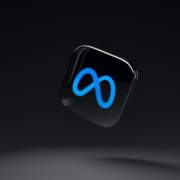Darden’s Restaurants Inc.: Where Success Depends Strongly On The General Manager As Brand Manager
Darden Restaurants Inc. owns some favorite dining brands including Olive Garden, Capital Grille, LongHorn Steak House and others. Restaurants, in particular, rely on their people to deliver a brand’s experience in a quality manner, time and time again. Especially important are General Managers. When it comes to the service business, the General Manager is the Brand Manager. Hiring, investing in, developing and inspiring the best managers is one of the most critical factors in generating high quality revenue growth of the brand-business. This is true at Darden.
Darden Restaurants’ recent analysts earning call was a positive report on brand performance across the board. CEO, President, Director Richard Cardenas told analysts the following:
“We had a strong quarter on both the top and bottom line. We significantly exceeded the industry benchmarks for same-restaurant sales and traffic outperforming more on traffic than we did on sales. We also continue to underprice inflation, resulting in lower overall check growth relative to the industry. Our ability to make this investment and provide strong value to our guests, reinforces the power of our strategy, which comes to life through our 4 competitive advantages and executing our back-to-basics operating philosophy.”
Additionally, Mr. Cardenas said,
“I am particularly proud of the way our restaurant teams continue to execute at a high level by being brilliant with the basics. This intense focus on providing great food service and atmosphere enables them to consistently create memorable guest experiences.
“… all of our brands achieved record total sales for the quarter. Of course, none of this would be possible without having the right people in the right roles ready to serve our guests.
“Our restaurants continue to be well staffed and our manager staffing remains at historic highs. Our leaders work hard to ensure each of our restaurants is a great place to work. During the quarter, several of our brands were recognized as industry leaders by Black Box Intelligence. Longhorn and Eddie V’s received the Best Practices Award, which evaluates the brand’s employee retention as well as sales and traffic performance. Olive Garden, the Capital Grille and Seasons 52 were honored with the Employer of Choice Award, which is based on workforce data, including employee turnover and gender and racial diversity.”
In response to an analyst question about the fact that at Darden, Darden has more managers than ever, Mr. Cardenas responded as follows:
“The manager role in our restaurants is the most important role we have, especially the General Manager, the Managing Partner and being fully staffed there gives them more time to spend with their team and train their team, develop them, make them stronger and just spend that time forecasting their business and spending time with guests.
If you’re under-staffed managers, the restaurant doesn’t run as well. But the other thing about being fully staffed with managers and have the highest staffing in our history is that, that helps us open restaurants going forward, right? If you think about our pipeline of new units, we have about 25 net openings coming in this quarter, and we are ready for it with the managers that we have. So, there are a lot of benefits out of being fully staffed managers can spend more time with their team, they can spend more time with guests, and we have the managers to open our restaurants.
This is so important. In the hospitality business, the grocery business, the automotive dealership and rental car businesses, department store and boutique businesses – in any business where customers meet products and services in person – building strong brands requires personally communicating a promise of a relevant and differentiated experience for each brand. Then, that experience must be delivered to every customer, at any time, in every way, everywhere.
These brand experiences are created on site and delivered to each customer in a wide variety of locations, by a wide variety of people. No one knows a customer’s needs better than the General Manager because the General Manager lives and breathes it every day.
Regardless of industry, a brand is a promise that if you buy this brand, you will get this experience. A strong brand is a promised experience that is consistently delivered.
The role of the General Manager, along with staff or crew, is to deliver a great branded customer experience that customers will love. General Managers are responsible for assuring that brands live up to their promises. The General Manager is responsible for creating the brand experiences that customers expect.
Think about all the things that a General Manager knows and manages every day:
- The general manager knows the customer
- The general manager knows the customer’s needs and occasions for use
- The general manager knows the customer’s typical problems and how to solve them
- The general manager knows the brand, lives the brand, breathes the brand and knows how to coach and train the staff/crew to know these as well.
- The general manager knows the neighborhood
- The general manager knows the business community and the potential for building strong local business relationships
- The general manager knows best how to deliver the brand to the customers every day
- The general manager is involved in local marketing: who else knows so much about what is happening in your surrounding community.
- The general manager is in charge of community outreach if there is natural disaster
- The general manager is the local chief communicator, chief brand coordinator and chief brand.
- The general manager creates teams of customer maniacs who care about the customers, the brands and each other.
- As the ultimate brand managers, the general manager builds brand experience consistency and brand trust.
The General Manager orchestrates consistency of the brand experience. Consistent brand experiences build trust. Inconsistency hurts trust. Without trust nothing else matters. The General Manager helps do this by bringing the brand promise alive on site. Nothing happens until it happens at retail.
Great General Managers build brand preference. Increasing brand preference will result in:
- More customers,
- More often,
- More loyalty,
- More sales,
- More profit.
Brand preference cannot be created in corporate offices. Brand preference is created on site. Brand preference grows when the brand promises and delivers a superior, differentiated guest experience so that brands are the customer’s first choice.
Being a great General Manager means consistently delivering great experiences, inspiring teams and keeping brand promises tangible and perceptible. As the Brand Manager, a General Managers inspires, influences, educates, trains and supports employees in their respective roles as responsible for delivering the distinctive promise of the brand to every customer every time, everywhere.
Darden Restaurant’s shout out to its people and especially to its managers is a critical component of its restaurants’ financial success. Such behavior helps generate a recognition culture attracting the best leaders in the industry. An analyst pointed out that Darden has exceptionally strong brands much of which it based on operational excellence. Having the best managers in place to consistently bring each brand’s promise to life is certainly a key reason Darden’s brands resonate with its guests. As one business school professor stated to Barron’s, the financial newspaper, Darden Restaurants “ … do the same thing well over and over again… and there are very few out there that do it better than they do.”
Darden Restaurants Inc. knows that financial discipline is essential. But, it also knows and respects the fact that without its managers consistently delivering great results, inspiring teams and keeping its brands’ promises, there would be no financial brand value. General Managers hold the future of their brands in their hands and in their hearts, helping brands become bigger, better, stronger. General Managers as Brand Managers are key to helping Darden Restaurants make progress towards its mission, “To be financially successful through great people consistently delivering outstanding food, drinks and service in an inviting atmosphere, making every guest loyal.”










